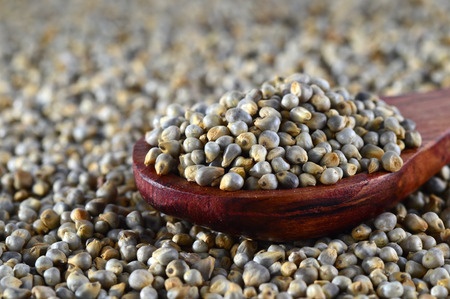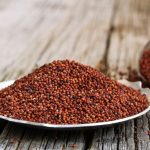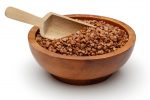
Pearl millet (Pennisetum glaucum) has been widely grown for millennia on the plains of Africa and the Indian subcontinent. The first centers of cultivation were the Sahel region of Western Africa and there is evidence from burial grave sites of it being grown in northern Mali from at least 2,500 B.C.E. The first recorded cases in India date cultivation to 2,000 B.C.E.
Characteristics
The height of the plant ranges from 0.5 – 4 m
The grass produces ovoid grains of 3 – 4 mm length and has the largest kernels of all varieties of millet but not including sorghum. These can be in a variety of colours from nearly white, pale yellow, brown, grey, slate blue or purple. The 1000-seed weight can be anything from 2.5 to 14 g with a mean of 8 g depending on the cultivar or variety grown, and the conditions at the time of peak growth.
Cultivation
Pearl millet grows well as an annual crop in areas of drought, poor soil fertility and in high summer temperatures. It seems to be robust enough to survive in soils with a higher salt content then normal and in volcanic, low pH soils. It is a preferred crop where maize, wheat and other staples cannot grow well.
Uses
The plant is known as barja in India and is often used to make a flat bread called bhakri. Dosas and some puris can be made from the grain if the flour is pounded out of the seed. There is a porridge made in India called Kambam Choru which is often prepared when few other staples are available.


Leave a Reply